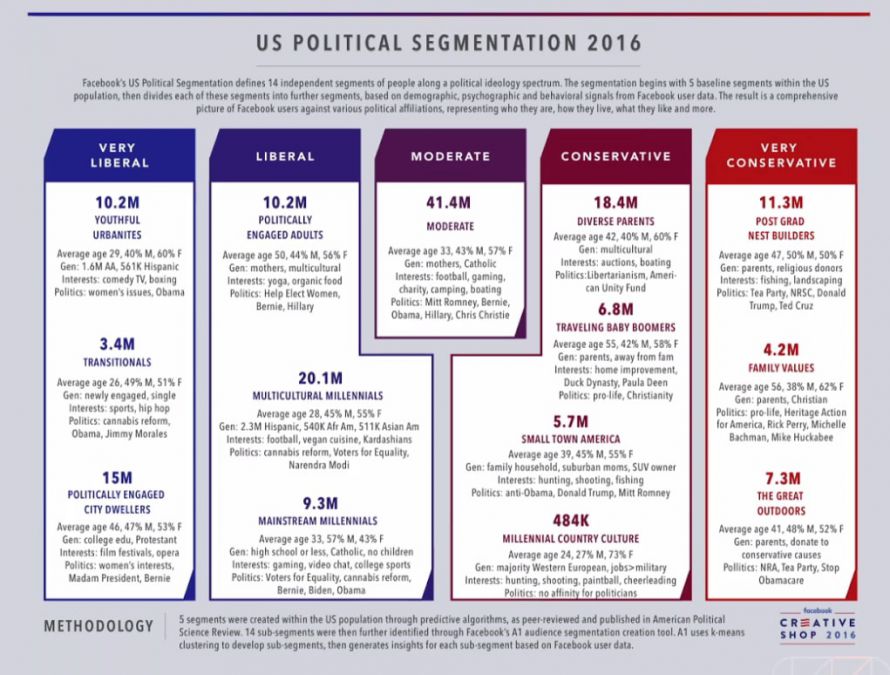



I’m a 67 year old husband and feel the same way.








The post Sunday Secrets appeared first on PostSecret.












The post Sunday Secrets appeared first on PostSecret.
The rules of commas are confusing, arcane, nonsensical, and require fifteen minutes of dedicated study. Who has the time? Fortunately, I’ll summarize them for you here.
Most people use more commas than necessary. Some people don’t use commas at all. Everyone talks about income inequality, but no one is talking about this.
You’ve probably used too many commas. In fact, I would go so far as to say you definitely have. As the last stage in your editing process, delete half of them. It doesn’t matter which ones.
You’re going to misuse a comma sometimes. It’s a rite of passage. All writers mess up their comma usage from time to time. They also don’t really know how to pay taxes. (In their defense, it’s complicated.)
Commas should go in between items in a long list of things. If you don’t have a long list of things, stick the commas in between cushions on your couch. Someplace where they’ll be easy to find later.
No one will care if you forget to use a comma unless you’re a woman with a Twitter account.
Little-known fact: most people aren’t sensitive to consuming too much salt, but enough are that the FDA has decided the safest option is to recommend everyone limit their salt intake. The same is true of commas. Most people don’t care if you use commas, as, much, as, you, want, but a small fraction of the population spent $120,000 on an MFA. And they’re the ones we must think of.
Statistically speaking, every sixteen seconds, a comma gets deleted by a frustrated editor who laments, “I can’t believe we gave this TikTok star a book deal.”
Contrary to popular opinion, commas don’t need to precede the word “because.” They can if they want to, though, and sometimes a rogue comma will infiltrate a sentence. To keep the peace, it’s best to let it stay.
Commas come after clauses. But Santa Claus isn’t real. Neither are commas. Nor is writing, really. It’s just words on a page.
A wise man once said, “Sure.” (The point of this parable is to demonstrate that you ought to use a comma before a quotation—did the message sink in?)
If you don’t understand commas, pay a writer to explain them to you. Actually, pay a writer for anything. Writers don’t make a lot of money.
Your writing is a little bit comma-happy. On a personal level, though, you are depressed. Likely because of the state of the publishing industry.
Use a comma anywhere in your writing you’d want the reader to pause. Also, use one after the word “phone,” because your reader will want to check their phone, so it’s nice to give them permission. They’ll check it whether or not you let them, though. You have no power.
Women don’t need to use commas when they’re menstruating. They’re going through enough already.
Always remember: there’s a reason “comma” rhymes with “llama.”
Commas should separate independent clauses. Dependent clauses should be freed—it’s the twenty-first century. And most of what you just wrote should be deleted. Drink another cup of coffee.
A comma is really just an apostrophe that wanted to take a nap. Who doesn’t need a nap from time to time? Surely your readers do. Or at least, they will.
Commas are like children. Your oldest never calls. Neither does your youngest.
Put a comma at the beginning and end of whatever you’ve written. Then delete everything in between the commas. This is the only rule of commas that matters.
Forget everything I just said. There is no wrong way to use a comma. If it feels right, it is.

An egg-free Citrus and Poppy Seed Pound Cake recipe that is moist, super easy to make and has a decent amount of poppy seeds.
The post Citrus and Poppy Seed Cake appeared first on seitan is my motor.
I would write an article locally using LibreOffice Writer, send the document in Slack to my editors, who would upload it to Google Drive on their own computers, edit it, re-download it as an ODT file, then send it back to me on Slack for rewrites.
↩︎ Motherboard
To celebrate the 20th anniversary of the first module of the International Space Station being put into orbit, ESA astronaut Alexander Gerst shot a 15-minute time lapse video of the Earth from the ISS, long enough for two complete orbits of the planet. Landmarks along the journey are annotated right on the video and the location of the ISS is also plotted on a map in the top right corner. Love the nighttime thunderstorms over the Pacific.
See also An Incredible Video of What It’s Like to Orbit the Earth for 90 Minutes.
Tags: Alexander Gerst Earth ISS space time lapse videoWhat’s going on in the brains of people who meditate? Anecdotal evidence suggests that meditation does something to people’s minds and bodies…quiets and calms them. In this video, Daniel Goleman reports on research done by his colleague Richard Davidson, a neuroscientist at the University of Wisconsin–Madison. Davidson brought a number of “Olympic level meditators” into his lab and hooked them up to a brain scanner. He found that the brains of these expert meditators have different brain wave patterns than the rest of us.
Perhaps the most remarkable findings in the Olympic level meditators has to do with what’s called a gamma wave. All of us get gamma for a very short period when we solve a problem we’ve been grappling with, even if it’s something that’s vexed us for months. We get about half second of gamma; it’s the strongest wave in the EEG spectrum. We get it when we bite into an apple or imagine biting into an apple, and for a brief period, a split-second, inputs from taste, sound, smell, vision, all of that come together in that imagined bite into the apple. But that lasts very short period in an ordinary EEG.
What was stunning was that the Olympic level meditators, these are people who have done up to 62,000 lifetime hours of meditation, their brainwave shows gamma very strong all the time as a lasting trait just no matter what they’re doing. It’s not a state effect, it’s not during their meditation alone, but it’s just their every day state of mind. We actually have no idea what that means experientially. Science has never seen it before.
Goleman and Davidson have written more about how meditation affects the mind and body in their book, Altered Traits.
Sweeping away common misconceptions and neuromythology to open readers’ eyes to the ways data has been distorted to sell mind-training methods, the authors demonstrate that beyond the pleasant states mental exercises can produce, the real payoffs are the lasting personality traits that can result. But short daily doses will not get us to the highest level of lasting positive change — even if we continue for years — without specific additions. More than sheer hours, we need smart practice, including crucial ingredients such as targeted feedback from a master teacher and a more spacious, less attached view of the self, all of which are missing in widespread versions of mind training.
There’s that pesky deliberate practice popping up again.
Tags: Daniel Goleman neuroscience Richard Davidson science video– Umberto Eco’s Antilibrary: Why Unread Books Are More Valuable to Our Lives than Read Ones
– Tara Brach has carried me through the last 3 years. So grateful for her wisdom. I needed to hear this talk/meditation on shifting from Human Doing to Human Being . (via Jocelyn’s Hurrly Slowly Podcast)
– How To Win At Rock-Paper-Scissors
– I watched this multiple times.
– The Making of a Manager: a Handbook for New Leaders
– My friend Bailey is featured in this article on Quitting Instagram: She’s one of the millions disillusioned with social media. But she also helped create it.
– These apps help introduce kids to the all-important world of calm and mindfulness
– This is a beautiful watering can.
– That grating sound a chip reader makes to tell you to remove your credit card? It’s called “sonic trash“: a sound that’s unpleasant, distressing, and degrading to everyday experiences. And the cognitive and emotional effect is greater than you think.
– The World’s Largest Collection of Tibetan Buddhist Literature Now Online
– Seth Godin launched a new book, titled “This is Marketing“. Ordered!
– “Reliving the events of 1998 was traumatic, yes—but also worth it, if it helps another young person avoid being “That Woman”-ed.” Monica Lewinsky is a brave soul. I have you haven’t seen her TED talk from, I highly recommend it.
– CreativeMornings is nurturing a rolodex of creative companies and a job board, helping you find your heart-forward creative collaborators. Our events open hearts, these tools open career doors. I am happy about this evolution.
– A big thank you to Ode to Things for sponsoring my blog and RSS Feed this week. Their website, the products their curate, are a visual feast.
– Tattly Tins make dinner parties more fun. Also, perfectly fit in stockings.

This is our 7th most-read article of 2018.
Originally published November 16.
Why did the scarecrow win a prize? Because he stood alone in his field! He stood there for years, rotting, until he was forgotten.
I tell my kids, you’re allowed to watch the TV all you want… Just don’t turn it on! This way they will begin to understand the futility of all things.
How does a penguin build a house? Igloos it together. Like all animals, it is an automaton, driven by blind genetic imperative, marching slowly to oblivion.
Why don’t skeletons go trick or treating? They have no body to go with them! The skeletons are like us: alone, empty, dead already.
I don’t really like playing soccer. I just do it for kicks! Like all of humanity, I pretend to enjoy things, and others pretend to care about my charade.
You hear about the moon restaurant? Good food, no atmosphere! If you eat there, you forfeit your life, which would make no difference to the universe as a whole.
Why did the blonde focus on an orange juice container? It said concentrate! She realized that society’s depictions of her were like the juice: formulaic, insipid, fake.
My wife told me to put the cat out. I didn’t know it was on fire! By the time I could act, it was incinerated, a harbinger of the path we all must take.
How come the invisible man wasn’t offered a job? They just couldn’t see him doing it! This man stands for all of us: unseen, misunderstood, irrelevant.
Today I gave away my old batteries… Free of charge! No one wanted them, so I became angry and threw them in the yard. The battery acid now leaks into the soil, killing a colony of ants. A sparrow eats their bodies and is poisoned. Somewhere in the Serengeti, a lion devours his rival’s cubs. Then the lion is shot by a poacher and sold to an unloved rich man whose father was an unloved rich man. In five billion years, the Sun will become a bloated giant, boiling the oceans and consuming our pointless cruelties with flames. I wake sweat-drenched and screaming, staring at the visage of a faceless god. “WHAT HAVE I DONE?! HOW COULD I BRING A CHILD INTO THIS WORLD!?” But this god, like all gods, is nothing—just my son’s Wilson baseball mitt, sitting on my dresser, mocking me.
Will February March? No, but April May! Soon we become ash, and time forgets us.
Read an interview with Alex Baia about thew making of this piece.
Buddhist monk Thich Nhat Hanh says listening can help end the suffering of an individual. Watch as he explains how to practice compassionate listening.

Sears has filed for bankruptcy protection and plans to close hundreds of stores in an effort to keep the company afloat. The Sears catalog is perhaps one of the most important and under-appreciated innovations in American life. Starting in 1888 with a mailer advertising watches and jewelry, Sears introduced millions of Americans to in-home shopping by using the growing networks of the railroad and US Postal Service, much like Amazon and other retailers would using the internet decades later.
The time was right for mail order merchandise. Fueled by the Homestead Act of 1862, America’s westward expansion followed the growth of the railroads. The postal system aided the mail order business by permitting the classification of mail order publications as aids in the dissemination of knowledge entitling these catalogs the postage rate of one cent per pound. The advent of Rural Free Delivery in 1896 also made distribution of the catalog economical.
As historian Louis Hyman explained on Twitter, the way Sears sold goods to their customers also provided new opportunities for black Southerners living under the Jim Crow system.
Every time a black southerner went to the local store they were confronted with forced deference to white customers who would be served first. The stores were not self-service, so the black customers would have to wait. And then would have to ask the proprietor to give them goods (often on credit because…sharecropping). The landlord often owned the store. In every way shopping reinforced hierarchy. Until Sears.
The catalog undid the power of the storekeeper, and by extension the landlord. Black families could buy without asking permission. Without waiting. Without being watched. With national (cheap) prices!
This excellent piece by Antonia Noori Farzan has more info. Reading this, I couldn’t help but think of blind auditions, the practice of auditioning orchestra musicians behind a screen to help cut down on gender bias during the hiring process. While not entirely free of bias — opportunities for discrimination by postal workers and Sears employees were still possible — the Sears ordering process was essentially a blind retail transaction, a screen placed between the store and black customers. (The catalog also advertised racist costumes so obviously Sears wasn’t some bastion of social progressivism…they simply wanted to sell more goods to more kinds of people.)
According to Sears historian Jerry Hancock, Sears also developed a policy to help those who couldn’t read or write that well to be able to place orders:
One of Hancock’s discoveries was Sears’ response to the needs of a rural South in which literacy was rare. For someone who could neither read nor write, placing orders and following written protocols were problematic. Richard Sears responded with a policy that his company would fill any order it received, no matter what the medium or format. So, country folks who were once too daunted to send requests to other purveyors could write in on a scrap of paper, asking humbly for a pair of overalls, size large. And even if it was written in broken English or nearly illegible, the overalls would be shipped.
Music scholar Ted Gioia notes that blues musicians were able to buy instruments from Sears that were unavailable to them from local retailers.
With Sears declaring bankruptcy, it’s worth remembering how much impact this company had on American music. In my research into blues and other traditional styles, I found that many, many musicians started out on Sears instruments.
Even under Jim Crow, music was an avenue for upward mobility for African Americans, and Sears and other mail-order retailers were more than happy to provide them with instruments.
Tags: Antonia Noori Farzan business Jerry Hancock Louis Hyman music racism Sears Ted GioiaMy son couldn’t stop watching this.
– Yesterday was CreativeMornings‘ 10 year anniversary. So many feelings.
– You don’t owe anyone an interaction. (via)
– I want to walk around this Lavender Labyrinth
– This app by AT&T has reduced the amount of SPAM calls that come through impressively. Highly recommend!
– Timelapse: Braces Straightening Teeth
– Eileen Fisher: ‘When Was Fashion Week?’
– I love Turkish Towels.
– 8 TED talks that explain difficult topics to your kids
– I keep coming back to this Tower Shoe Rack.
– The fastest way to save $1 Million
– I didn’t realize people did this: Here’s a Hack for Alternate Side Parking in NYC
– Let Love Reign, A Photography Project on Marriage Equality.
– This feather print. Wow!
– I buy a lot of round cheeses. I would love this round cutting board.
– Rob Hodgson is our latest addition to our Tattly artist roster. I couldn’t be more excited. Check out The Spooky Squad.
– Big thanks to Refine Packaging for sponsoring my blog this week.
– Make sure to check the rest of my posts this week.
Cool jobs to apply for: There are over 1,200 jobs listed on the new CreativeMornings job board. Search full time, part time, contract, remote, freelance, internships.
– The Chan Zuckerberg Initiative in Redwood City is hiring a Designer, a Director of Community, a Senior Software Engineer, a Product Designer and a Copywriter.
– Flatiron School is hiring over 90 roles in Seattle, New York, San Francisco and even some remote jobs.
– VSCO is hiring a whole bunch of creative roles.
– Shopify is hiring in Toronto, Ottawa and even some remote positions.
– Handshake in San Francisco is hiring a Senior Product Designer.
...new details emerge about an elite plain-clothes police unit that, for years, doubled as a criminal gang - robbing residents, planting evidence, and sending countless innocent people to jail.
The unit operated with impunity in part because of the way police complaints are investigated. In Baltimore - like many other cities - if a police officer is accused of wrongdoing, the complaint is investigated behind closed doors by the police department's own Internal Affairs Division. Fault Lines investigates how this latest police scandal once again places Baltimore at the centre of a national debate over how and whether police departments can be held accountable to the communities they police.
At this point, reading about how incompetent the Trump campaign and White House have been and continue to be — perhaps knowingly, given the viewpoint of some of his advisors and backers about wanting to weaken the federal government — is getting tiring, but Michael Lewis is always worth paying attention to. His newest book, The Fifth Risk, is about how unprepared the incoming Trump administration was to govern the country, to “take control of the portfolio of existential risks managed by the US government” as he puts it. The Guardian has an excerpt:
Chris Christie was sitting on a sofa beside Trump when Pennsylvania was finally called. It was 1.35am, but that wasn’t the only reason the feeling in the room was odd. Mike Pence went to kiss his wife, Karen, and she turned away from him. “You got what you wanted, Mike,” she said. “Now leave me alone.” She wouldn’t so much as say hello to Trump. Trump himself just stared at the TV without saying anything, like a man with a pair of twos whose bluff has been called. His campaign hadn’t even bothered to prepare an acceptance speech. It was not hard to see why Trump hadn’t seen the point in preparing to take over the federal government: why study for a test you will never need to take? Why take the risk of discovering you might, at your very best, be a C student? This was the real part of becoming president of the US. And, Christie thought, it scared the crap out of the president-elect.
Not long after the people on TV announced that Trump had won Pennsylvania, Jared Kushner grabbed Christie anxiously and said: “We have to have a transition meeting tomorrow morning!” Even before that meeting, Christie had made sure that Trump knew the protocol for his discussions with foreign leaders. The transition team had prepared a document to let him know how these were meant to go. The first few calls were easy — the very first was always with the prime minister of Great Britain — but two dozen calls in you were talking to some kleptocrat and tiptoeing around sensitive security issues. Before any of the calls could be made, however, the president of Egypt called in to the switchboard at Trump Tower and somehow got the operator to put him straight through to Trump. “Trump was like … I love the Bangles! You know that song Walk Like an Egyptian?” recalled one of his advisers on the scene.
Ho. Ly. Shit. Incredibly, Lewis’ very next line is: “That had been the first hint Christie had of trouble.” — which makes Chris Christie the most tone-deaf individual in the world? (Probably…Christie was fired the next day, a complete surprise to him.)
The book comes out tomorrow…you can pre-order from Amazon here.
Tags: 2016 election books Donald Trump Michael Lewis politics The Fifth Risk USAkaelenhi pooey
Even though the diversity of the US Congress has increased in recent years, a trend that looks to continue after the midterm elections in November, overall the 538 people who serve in Congress are not actually that representative of the US population as a whole. Congress is still way more white, male, and Christian than the US as a whole.
In 2016, Ken Flerlage looked at the gender, religious, and racial diversity of the United States and compared it to that of Congress.
Congress has 104 women (19%) and 431 men (81%) while the United States population is 51% female and 49% male. In order to be truly representative, in terms of gender, 168 seats currently held by men would need to be won by women (taking the number to 272 women and 263 men). It is also worth noting that, of the 104 women, 76 are Democrat (73%), while only 28 are Republican (27%).
And here is the visualization for religion:

7.1% of the population are atheist or agnostic and 2.4% ascribe to “other” religions (this includes “don’t know”, other world religions, Pagan, Wiccan, Native American religions, and numerous others), yet not a single member of Congress falls into any of these categories.
When you hear people saying that America is still largely a patriarchal & white supremacist society, this is what they are talking about. It’s not just people being hyperbolic.
You could easily expand on this analysis by breaking it down by age, income, education, urban vs rural, sexual orientation, and occupation. You could guess that a truly representational Congress would be younger, waaaay more poor, less accredited, more urban, less straight, more working class, and, when you consider the gender & racial factors, much more politically progressive, but it would be illuminating to see the actual numbers. I’d love to see the NY Times (maybe The Upshot?), FiveThirtyEight, or The Pudding tackle this analysis.
P.S. It’s also worth noting a truly representational Congress would include full voting members from Puerto Rico and Washington DC as well as from other US territories. And maybe separate Native American representation?
Tags: demography infoviz Ken Flerlage politics USA
There are a lot of chana masala recipes out there that are perfectly good, but this is the chana masala you should make tonight. It's what I want when I order chana masala in a restaurant. It's what I look for when I dive into a beautiful thali plate.

Chana masala, the wildly popular dish from the Indian subcontinent made of chickpeas (chana) simmered in a feisty, spice-forward tomato sauce. It's one of those gateway preparations that introduce people to the food of India and Pakistan, and I've enjoyed versions of it all over the world. I've had it in Bangkok, I've had it in Rome, I've had it in Jodhpur, and I've had it in Istanbul. I've formed strong opinions, and there were a number of variables I wanted to (finally) get right for a go-to version I would make regularly in my own kitchen. It has taken a while to crack the code!

Chana masala varies from region to region, across borders, and from cook to cook. This is the version of chana masala I hope for and crave when I order it at a restaurant. What you tend to get in a restaurant is often overly oily, sadly seasoned, boring. This is not that. This is a Technicolor version of chana masala. It's spicy, racy, and balanced. There's kick from cayenne, serrano, and chana masala powder. There's a bit of sour from the tomatoes, from the mango powder and pomegranate seeds in the chana masala powder.

As I was working on this recipe there were a number of things I wanted to focus on. First, I wanted to get the flavor and texture right (of course). Texture is really important, and my favorite chana masalas often lack clear definition between the chickpeas and the sauce, in a good way. They have this third thing going on, a crumbled texture of sorts, which I learned is from broken up chickpeas. You'll see that reflected here.
There's an onion masala sauce I like in Urvashi Pitre's Indian Instant Pot Cookbook. I used that as one of my jumping off points here - scaling back the oil and salt by half, tweaking the spice and ingredients amounts more to my liking, and approaching things for the stovetop instead of a pressure cooker (or IP). Once you have a simmer sauce mixture like this prepared, you're 90% there as far as effort is concerned, and you can make it more or less spicy based on your own tastes. One other idea I had in my notes - rehydrate hibiscus flowers (jamaica), chop them, and use them as a finishing topping. I feel like chana masala really needs a balancing kick of acid (usually citrus) to counter the chickpeas and sauce, but maybe the tang of hibiscus could be welcome too.
Second, I think one of the things that intimidates people about cooking Indian, or Pakistani, or Sri Lankan food at home is those long ingredient lists (so many good-for-you spices). I've written this recipe so you'll have enough of the simmer sauce for two meals. One for now, one to freeze for later. Double that and you've got four meals...

Which chickpeas to use? The answer is simple, whatever you have on hand. If you have chickpeas you've cooked from dried (like these turmeric soaked chickpeas), use those. If it's a Wednesday night, and all you have is canned chickpeas, go for it! Either way, your chana masala will be delicious.
Thick or thin: Some chana masala is thin and soupy, other times it is thick, and more cohesive. It's all a matter of personal preference - I tend to like mine somewhere in the middle.
Chana masala powder: You need to source good chana masala powder. It matters (meaning, don't leave it out), and you're not going to make it at home - it has mango powder, ground pomegranate seeds, dried musk melon, and a long list of other wonderful but challenging to source ingredients. I've been using this MDH chana masala powder, and I like it. Spicy! Tangy! Good sprinkled on all sorts of things.
Pair with: Eat chana masala with rice, eat it with flat bread, eat as a component in a thali plate, eat it spooned over your favorite grains. I love it with a simple side of cauliflower, and often I'll throw in a handful of shredded kale or spinach, to get my greens in - a perfect one dish meal.
Hope you love this recipe!
Continue reading A Really Good Chana Masala...
In this video, Vox's Estelle Caswell and Martin Conner break down how rappers construct their rhymes and how it's changed and evolved since rap's early days. As someone who doesn't know a whole lot about music and even less about rapping but appreciates both, this was super entertaining and informative.
Tags: Estelle Caswell Martin Conner music videoThis is a cover of Crystal Castles' "Untrust Us" done by London's Capital Children's Choir.
OK so where's the Kickstarter to get a children's acapella group to cover all my favorite house music?
(via @heyitsgarrett)
With a child and dog at home, Sam Billiter didn't want to take any chances when he found a large venomous copperhead snake in his woodpile. So he decapitated it. But the body and the head didn't really want to be parted.

A frog using a leaf as an umbrella in a rain storm. Shot by Penkdix Palme.
Tags: Penkdix Palme photography